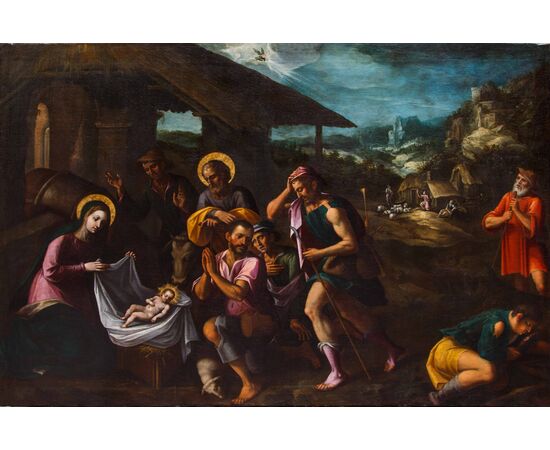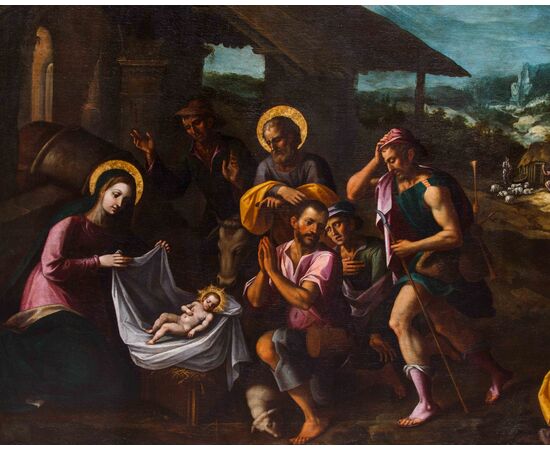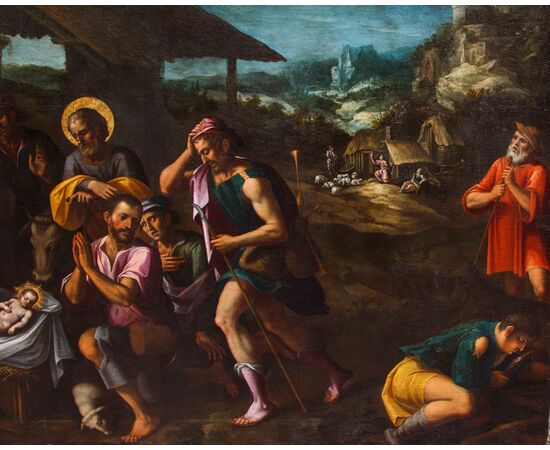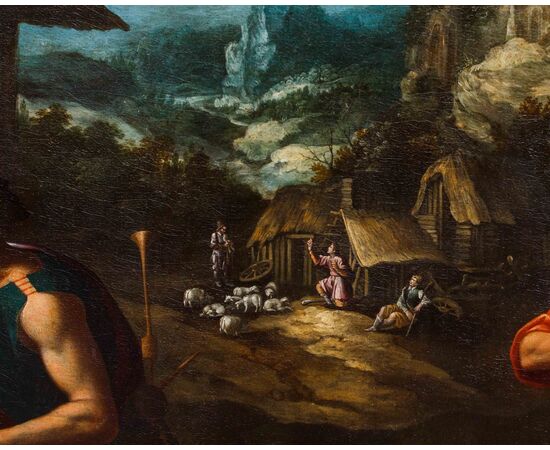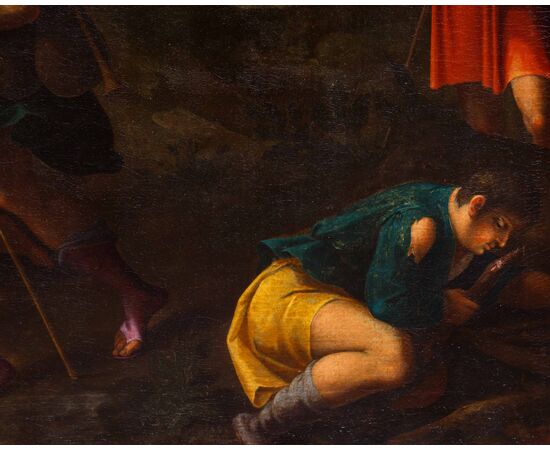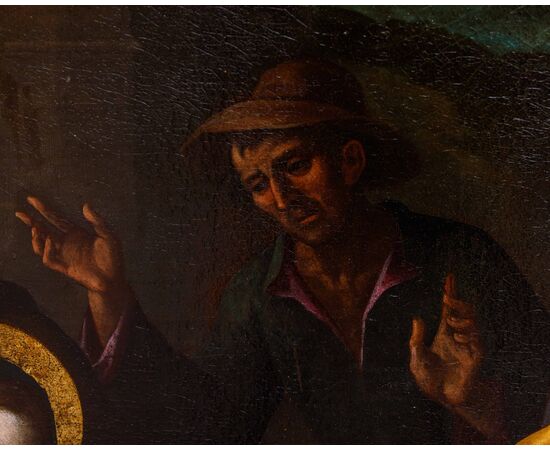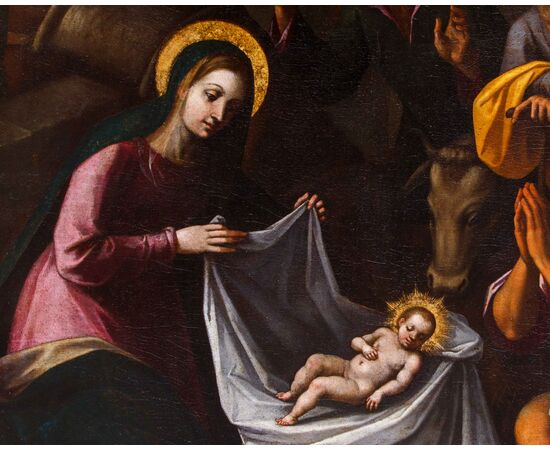Nordic artist active in Italy, last quarter of the 16th century, Adoration of the Shepherds
Nordic artist active in Italy, last quarter of the 16th century Adoration of the Shepherds Oil on canvas, 117 x 171 cm The work is shaped as a re-elaboration of numerous Bassanesque ideas, mediated through the engraving work of Sadeler and Cornelis Cort. In a makeshift wooden hut, the Virgin, whose face exhales a powerful light, shows the Baby Jesus to a procession of poor shepherds, under the eyes of Joseph, who turns a look of love and apprehension to Christ. The clothes of the Madonna, Joseph and the shepherds have enameled tones, but the landscape has a nocturnal atmosphere, lit only by the halo of light that spreads from the angelic presence responsible for the announcement to the shepherds. What is most striking is the moving humility of the shepherds, in line, moreover, with the spirit of the Gospel account, which wants the last in the social hierarchy as the first worshippers of the Messiah. In the right section of the composition there is a typical figure in the scenes of Adoration of the Shepherds of the flourishing workshop of the Bassano, that of the crouching shepherd blowing on a burning ember, in the useless effort to revive a flame, now weak in the face of the powerful light of divine revelation. The figure, present, among other paintings, in the marvelous Adoration by Jacopo da Ponte executed in the 60s of the sixteenth century and currently exhibited in the rooms of the Roman Corsini gallery, will later be widely disseminated as an autonomous genre scene and will be reproposed in numerous engravings by Sadeler, thus obtaining a wide diffusion also in Northern Europe and in the Rudolfine area. Derived from the activity of the Da Ponte workshop and spread through Sadeler's engravings is also the pose of the Virgin with the Child, of great visual impact. Interesting from the compositional point of view is certainly the character of the shepherd with the hat, often reported in various prints and engravings of Nordic nature, first of all by Sadeler and Cort. Even the background seems to echo the reinterpretation of Bassanesque models, with particular reference to the series of Allegories of the four seasons of the Kunsthistorisches Museum in Vienna.

